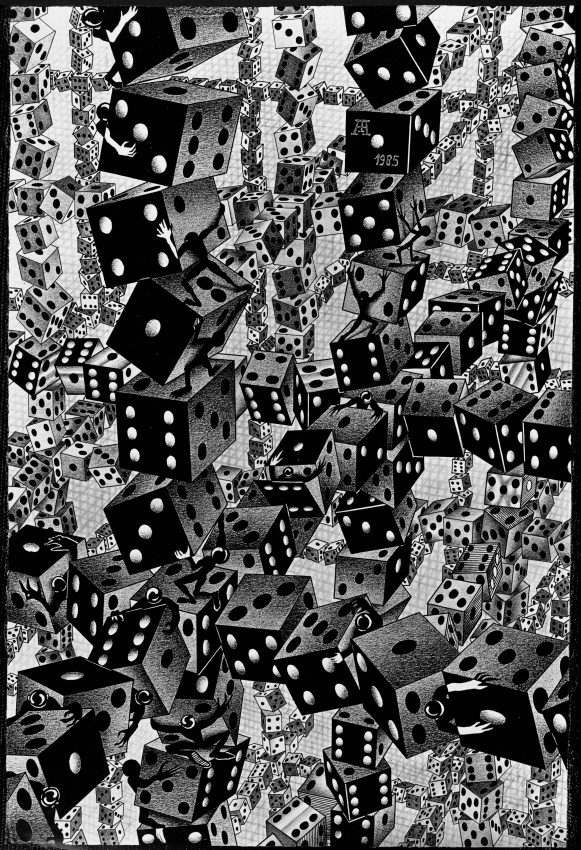Random processes in probability
No. 234, 1985
(Probability theory)
India ink and pencil on paper, 33.5 x 50 cm.
Throughout the universe random processes occur, ones that shape the world and affect our lives. Yet what makes a process random? Is there a hidden, underlying order? To appreciate this notion, consider the following scenario. A monkey stands in infinite space, holding onto a die. On each face of that die is another smaller monkey, who also holds a die. And on each of the faces of those dice are still smaller monkeys, each of whom holds a die, and so on, ad infinitum. At some point one monkey decides to throw his die in a random way, and soon they all follow. Suddenly the whole system is in motion, in fact, apparent chaotic motion. This idea, originally suggested by A. N. Shiryaev, serves as a visual model for random processes that play such a crucial role in probability theory. Since one cannot portray this scene literally, a three- dimensional cubic lattice is created instead for the sake of simplicity. In the depths of the space, one can barely see remnants of the original undistorted lattice, while in the foreground chaos has overcome order.
